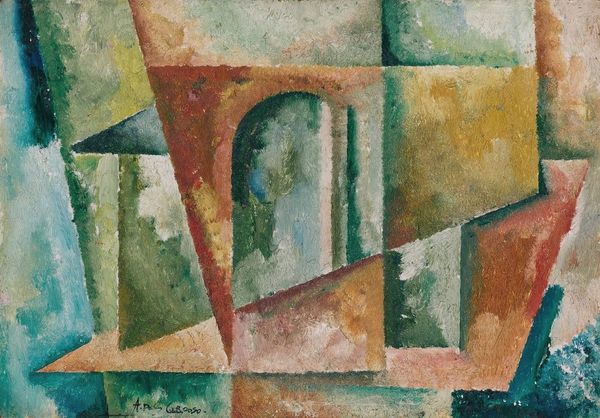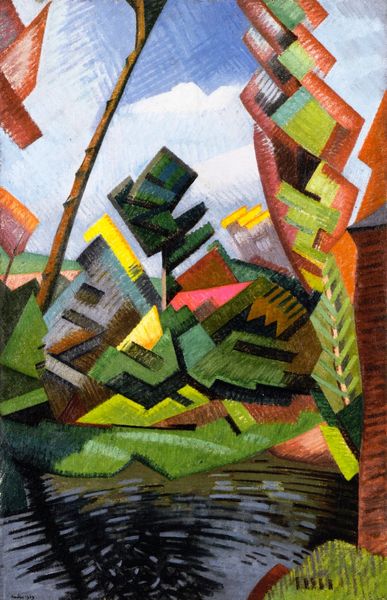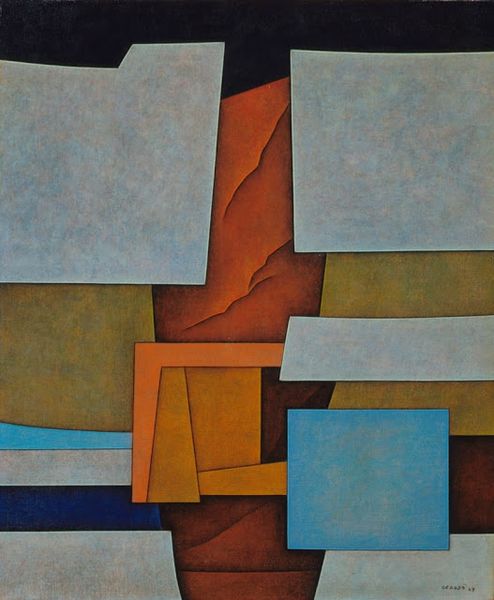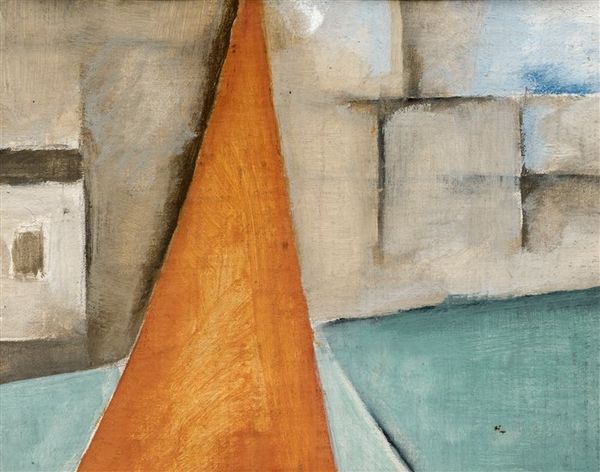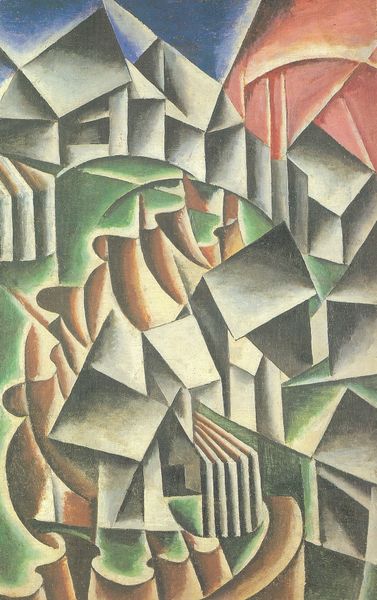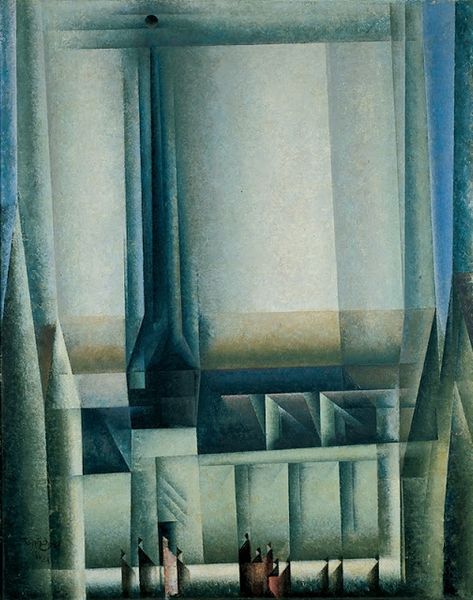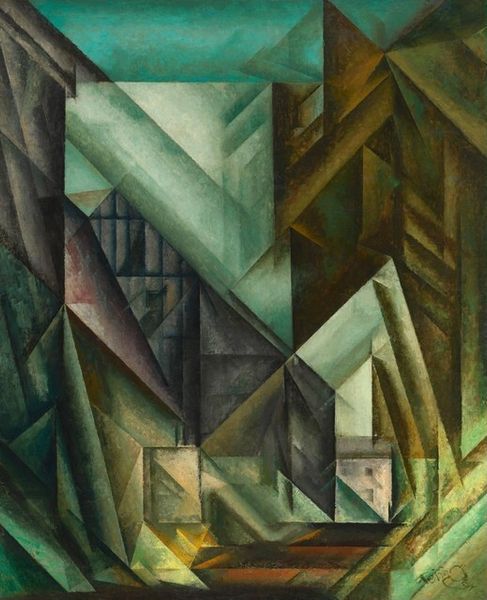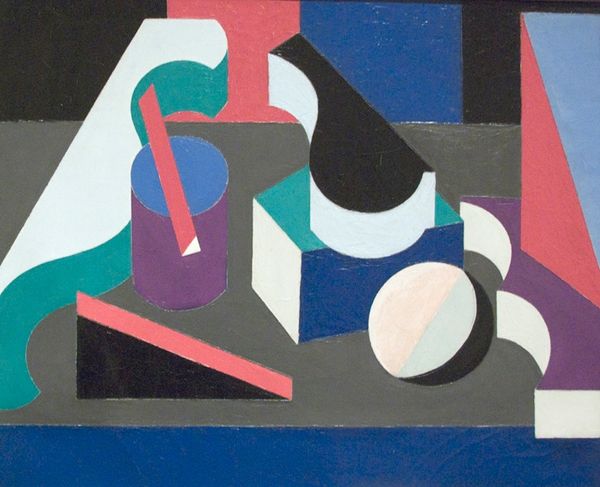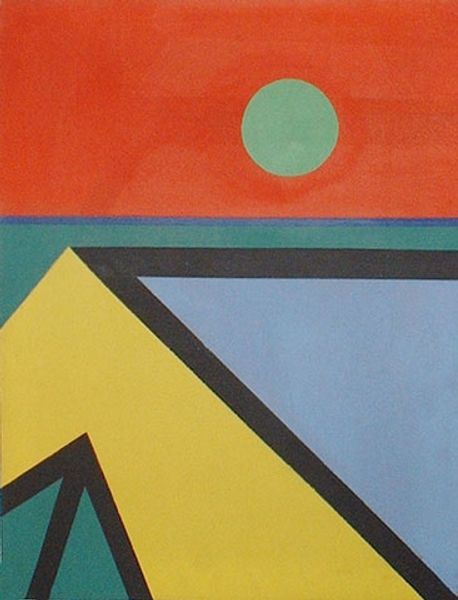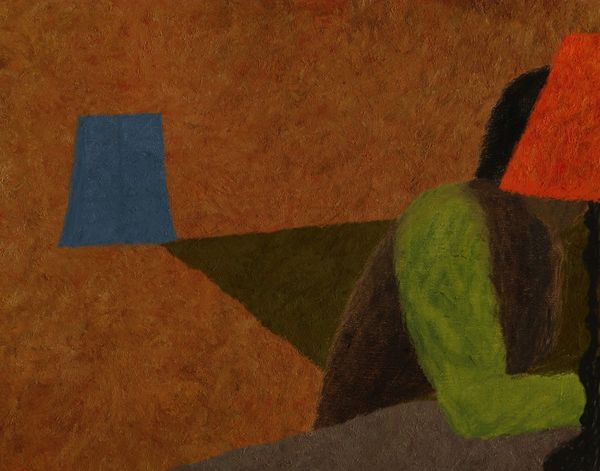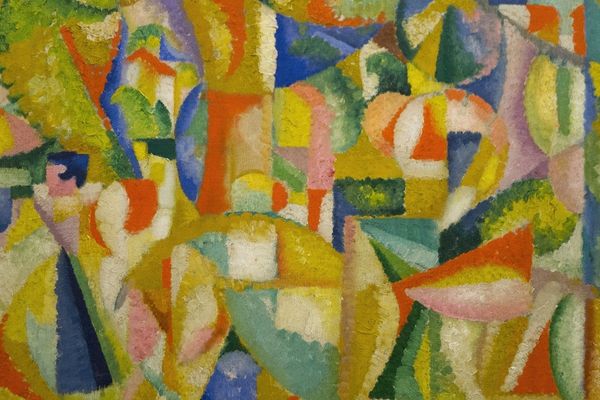
oil-paint
#
cubism
#
oil-paint
#
landscape
#
oil painting
#
neo expressionist
#
geometric
#
line
Copyright: Public domain
Curator: Looking at Josef Capek’s “At the Waterside” from 1917, painted using oil paint, I'm immediately struck by the bold geometry. It's almost dizzying, but there's a certain peace in the repetition of forms. What's your first impression? Editor: The fragmentation is so interesting here! The reduction of a landscape into almost a textile of triangular and rhomboid planes certainly reflects the burgeoning influence of Cubism, especially within the Prague art scene at the time. But what processes led to these precise geometric shapes, which clearly denote hillsides? Curator: Capek’s technique feels significant. Think about the physical act of applying oil paint to canvas to create these stark lines, considering the time invested in defining the repeated geometrical objects. It seems a laborious, almost manufactured depiction of nature. The cottage feels utterly isolated, an accentuation maybe on how human life is small. What was the Czech landscape representing back then? Editor: Early 20th-century Czech art wrestled with national identity, urban development, and industrial changes. I would see the cottage and even the small, solitary boat, which seem out of sync, as stand-ins for an agrarian past. It evokes a time before those societal shifts became palpable within everyday lives, certainly when one would use traditional boats for navigating across water. Capek is displaying progress by rejecting that image within the formal construction of painting. Curator: I agree it presents societal shifts, which begs the question how the image could function within a gallery then, or even now. The almost pixelated application of pigment appears so radical, breaking away from traditional landscapes which represent stability. Instead the image embodies industry using bold shapes and unnatural greens. Did audiences at the time think the artist's process devalued traditions by placing new perspectives in the older landscapes? Editor: Well, public reception was surely mixed! While Capek, along with his brother Karel, became significant figures in the avant-garde scene, there's always a tension. Progressive voices saw the Cubist aesthetic as a bold embrace of modernity. Simultaneously, those with conservative sentiments deemed this rejection of realism as destructive. Institutions always face this difficulty, when deciding to exhibit forward facing and provocative images. Curator: “At the Waterside” definitely challenges notions of both the image-making and its place in art history. Considering all these issues surrounding process, presentation and historic interpretation, I will probably look at paintings in different ways going forwards! Editor: I concur. Hopefully visitors feel more equipped in the ongoing exploration between art and its position within cultural evolution too.
Comments
No comments
Be the first to comment and join the conversation on the ultimate creative platform.
